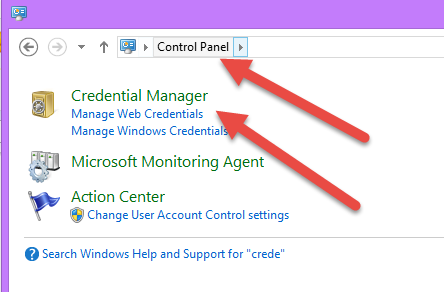If you’re a Windows user, Windows Credentials Manager is the place where your usernames and passwords, as well as other login details, are stored for later use in a digital library. This includes information for websites and apps, as well as network credentials.
In this article, we explain the key steps to managing your passwords and other sensitive information to ensure you are able to add, change, delete, and back up your data. While Windows Credential Manager has been around since Windows 7, this article focuses primarily on the Windows 10 version. However, many of the steps discussed will be similar for previous Windows versions.
What does Windows Credential Manager do?
As the free password manager native to Windows, Credential Manager will store login credentials, including usernames, passwords, and addresses, for use on a local computer or on other computers in the same network or server.
What credentials are saved by Windows Credential Manager?
Saved passwords and other stored information are divided into two categories in the Windows 10 version of Windows Credential Manager: Web Credentials, such as website logins, and Windows Credentials, such as information used only by Windows services and apps. This is a simplification of earlier Windows versions, introduced in Windows 8.1. Previously, there were four categories of stored information.
Windows Credentials includes several types of data, among them Certificate-Based Credentials, which are used mostly in a complex business network environment. Most users will not require these. However, you can learn more about enabling more complex certificate-based credentials using third-party certification authorities via the Microsoft support pages.
The Windows Credentials category also includes installed app information that gives your computer or others on the network the authorization to use the relevant programs. This makes Windows Credential Manager a straightforward way to manage the sensitive information you may require across daily tasks and within shared networks. Programs accessing such data might include Microsoft Office, Skype, or OneDrive.
Meanwhile, Web Credentials includes your general website information, such as usernames, passwords, email addresses, and other login data for use on the web.

How do I access Windows Credential Manager?
Open the Control Panel, go to User Accounts, then select Credential Manager. Alternatively, use the search box on the taskbar to search for ‘credential manager.’ You will see your two vaults: Web Credentials and Windows Credentials. This is where you will find all your saved information listed below these headings. If you are having trouble, you can find up-to-date information and support for Windows Credential Manager via Microsoft.
How do I manage saved passwords?
Managing stored credentials is relatively straightforward. Navigate to Credential Manager as above. To add credentials, select Add a Windows credential or Add a certificate-based credential, which will prompt you to add additional information.
If you choose Add a Windows credential, for example, you will be presented with the option to add the IP address, username, and password required for that credential. Once you enter this information and save, it will be added to your Windows Credential Manager library.
In this area, you can also edit and remove stored information by selecting either the Edit or Remove buttons respectively. Be careful when updating saved information, and avoid updating encrypted passwords used by specialized apps (like virtualization software) through the Windows Credential Manager. Instead, update these passwords directly in the app to avoid the risk of damaging future access to them. If this were to happen, you would have to reinstall and reconfigure the apps in question.
Whenever you remove a credential from your list, you will be prompted to re-enter that information the next time you log in to the app or website.
It is easy to back up stored passwords by selecting the Back up Credentials option in Credential Manager. Once you do this, click Browse to select a destination for your backup. You will be asked to specify a password to protect the Credential Manager file that will be created. Equally, you can restore saved passwords on a new computer by selecting Restore Credentials and then selecting a previously created backup file.
Security concerns
Windows Credential Manager is a user-friendly password manager, allowing you to easily administer sensitive information. However, there have been concerns about potential hacker access to saved passwords.
Passwords are stored in clear text in the Credentials Manager file format, so if a hacker has found their way into your system using elevated access (Local Administrator or System level access on your device), the clear text passwords are easy to exploit.
Additional encryption measures may help put your mind at ease. However, you would need to have the requisite technical knowledge to create a more complex data protection method, detracting from the user-friendly experience of Windows Credential Manager.

Built right into Windows
The Windows Credential Manager feature in Windows 10 will help users to better manage their passwords and other sensitive information across both web and Windows login credential types. It’s easy to add, remove, change, back up, and restore information.
Security might be a concern for some users, and Windows 10 has already been a strong target for hackers. While Microsoft works to make its systems more secure, users may feel more peace of mind with additional password encryption.
More secure options are certainly available when it comes to storing password information. However, for the standard user, the Credential Manager is easy to access and very user-friendly. It’s a good place to start administering your sensitive data more carefully.
